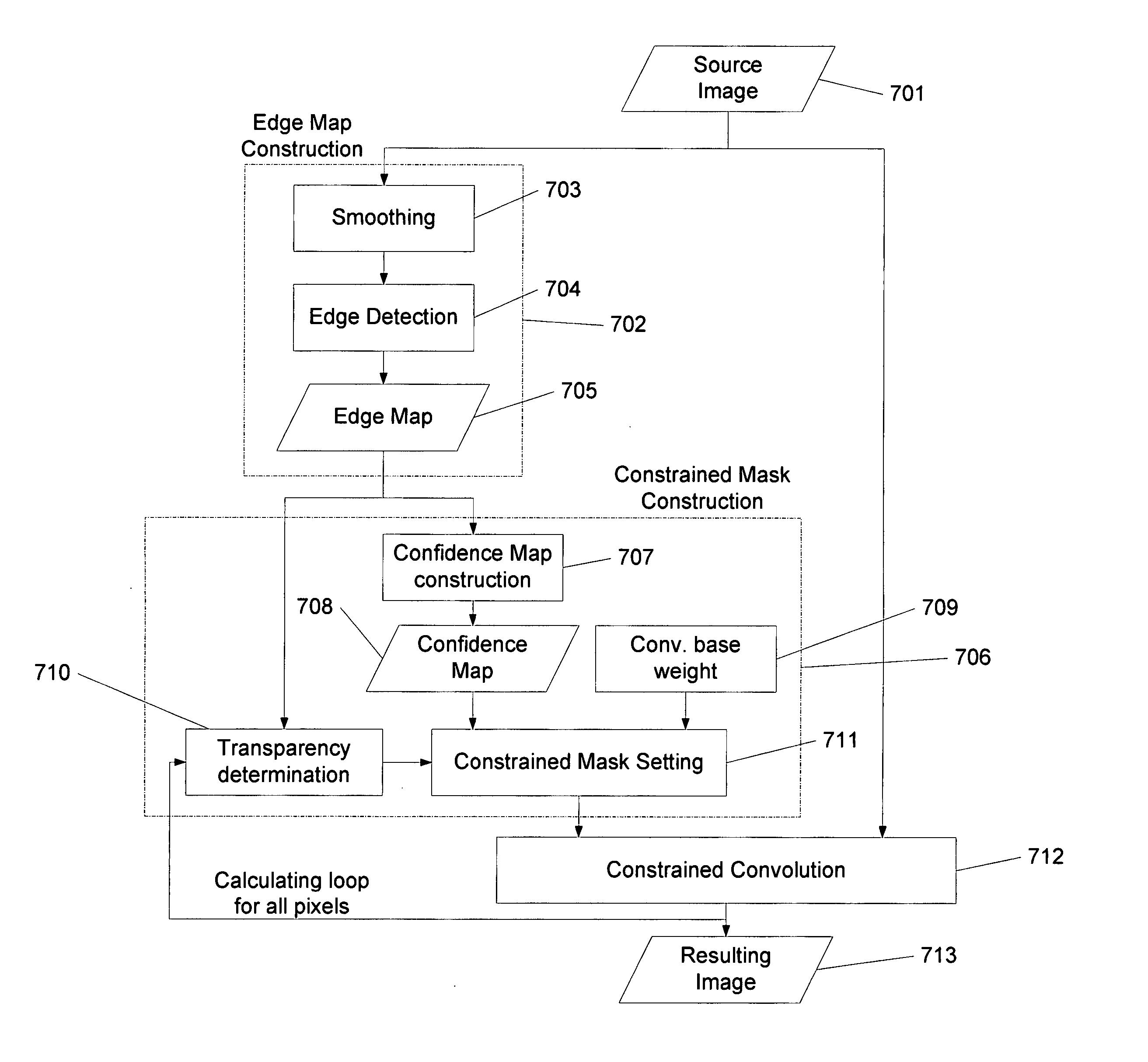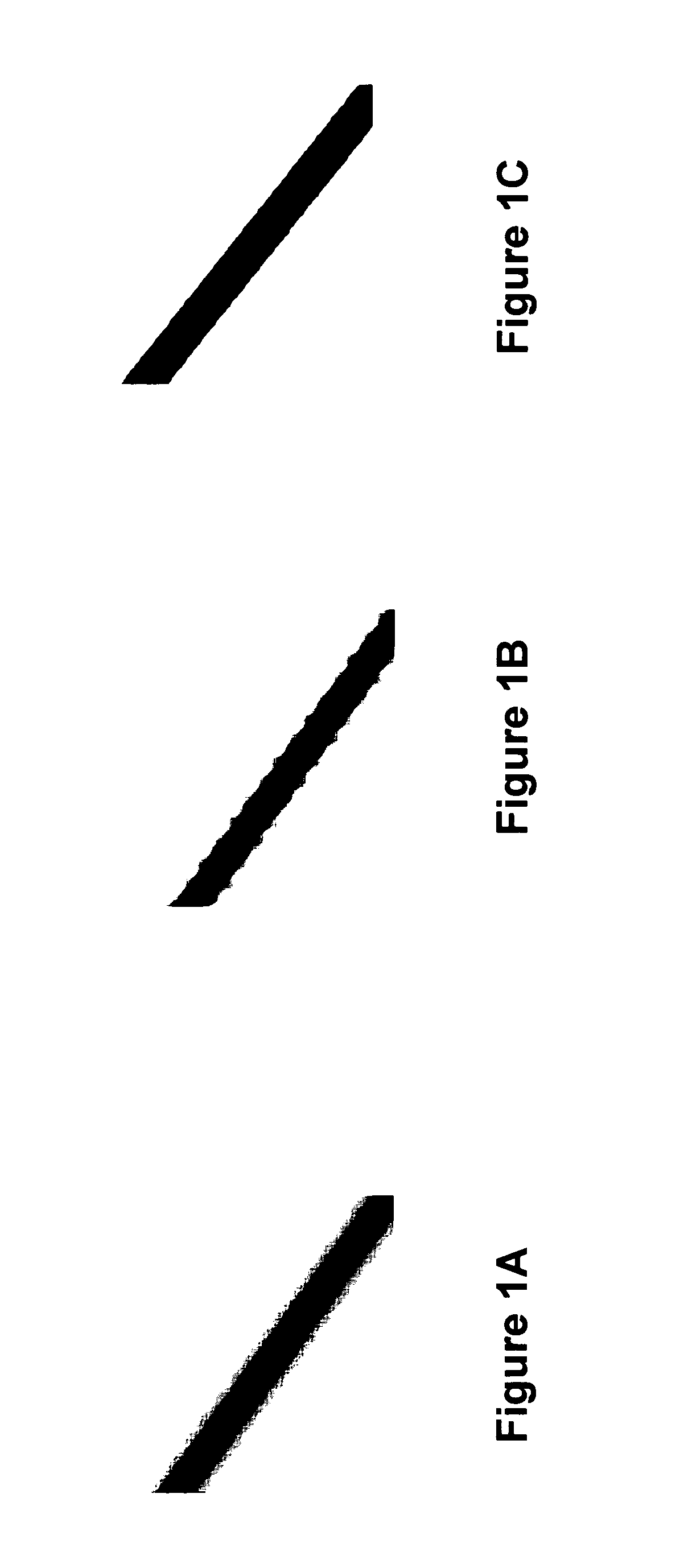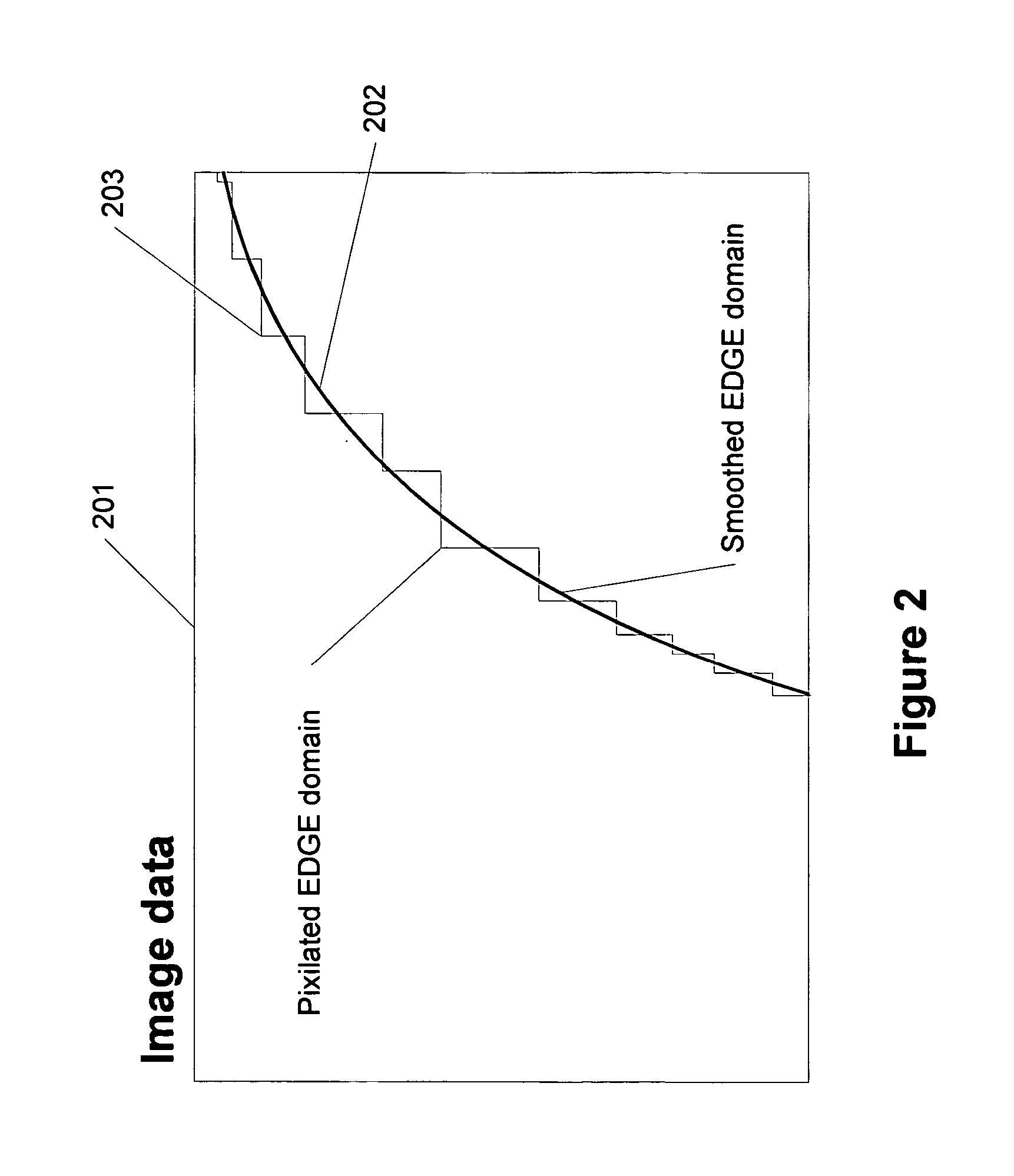Image sharpening with region edge sharpness correction
a sharpening and region technology, applied in the field of image processing, can solve the problems of affecting the sharpness of the original image, so as to achieve the effect of improving the image sharpening process and improving the resultant imag
- Summary
- Abstract
- Description
- Claims
- Application Information
AI Technical Summary
Benefits of technology
Problems solved by technology
Method used
Image
Examples
Embodiment Construction
Terms
EDGE domain: An edge extracted from a given image after using a certain edge detection process. In particular, an edge detection process that obtains very thin and smooth edges is useful. One way to achieve this is by applying a smoothing process before an edge detection algorithm is applied. FIG. 3A shows an example of an edge domain of an image. FIGS. 3B and 3D shows an image with blurred and jagged edges and the resulting edge domain (line pixels are in the edge domain while black pixels are not) obtained after applying a smoothing and edge detection process.
BLOCKED domain: This domain is defined as the set of pixels within a certain distance from an edge. The distance from the edge is referred as the “Influence Radius” of the edge. The pixels in the blocked domain are the pixels that are improved by the Constrained Convolution described below. Typically, one should select an “Influence Radius” large enough so that all the jagged pixels from an edge are contained within...
PUM
 Login to View More
Login to View More Abstract
Description
Claims
Application Information
 Login to View More
Login to View More - R&D
- Intellectual Property
- Life Sciences
- Materials
- Tech Scout
- Unparalleled Data Quality
- Higher Quality Content
- 60% Fewer Hallucinations
Browse by: Latest US Patents, China's latest patents, Technical Efficacy Thesaurus, Application Domain, Technology Topic, Popular Technical Reports.
© 2025 PatSnap. All rights reserved.Legal|Privacy policy|Modern Slavery Act Transparency Statement|Sitemap|About US| Contact US: help@patsnap.com



